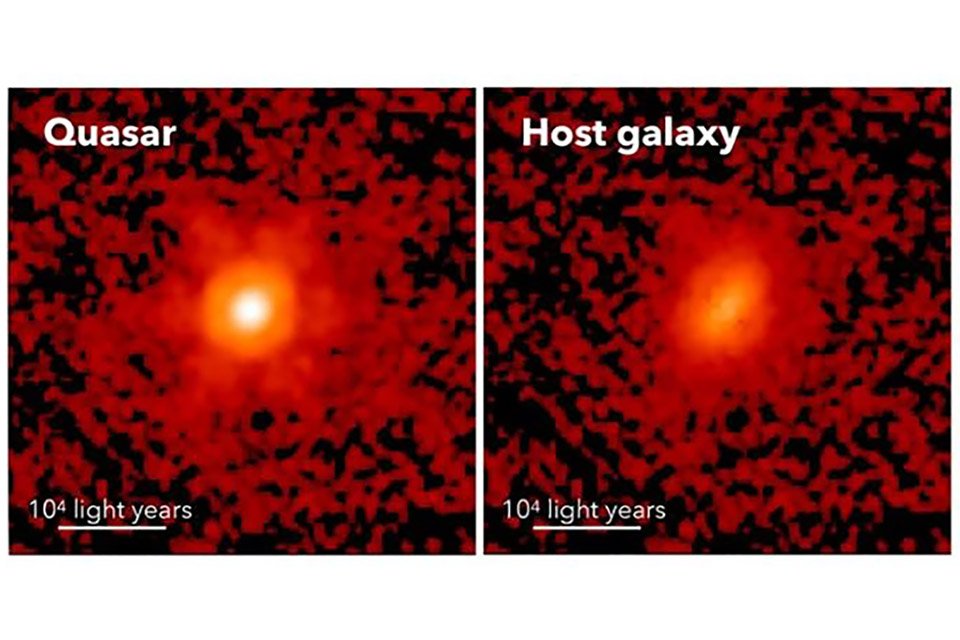A study published Wednesday in the journal Nature has revealed another stunning and first-of-its-kind observation by the James Webb Space Telescope (JWST): starlight from two large galaxies that host quasars or growing black holes. The observed scene occurred less than a billion years after the Big Bang.
While it’s natural to think that these active supermassive black holes have galaxies around them, their voracious “appetite” of consuming stellar gas causes its surroundings to shine brightly enough to outshine the galaxy. Since these quasars were discovered in the 1950s, scientists have struggled to visualize their host constellations.
Now, this feat has been achieved thanks to observations from JWST’s NIRSpec near-infrared spectrograph and data from the Subaru Telescope in Hawaii. In a broadcast, astronomer Chien-Hsiu Lee of the WM Keck Observatory, Subaru’s neighbor, said that the JWST images “model and extract the light from the quasar to reveal the host galaxy”.
What is the significance of this discovery made by the James Webb Telescope?
One of the authors of the article, astronomer Knud Jahnke from the Max Planck Institute for Astronomy, said in a statement that he observed these quasars. — Labeled J2236+0032 and J2255+0251 — Since it was discovered by Subaru in 2015 and 2017. But removing light from the activity of these black holes allowed the researchers to calculate the mass of the galaxies, in this case 130 billion and 30 billion solar masses, respectively.
This number is significant as it reveals hitherto unknown information about a relationship between the masses of supermassive black holes and their host galaxies. “If you know the mass of a black hole, you can estimate the mass of a galaxy around it and vice versa, even for small galaxies” Like our Milky Way (with 60 billion solar masses)explains the research.
The study has yet to reveal the reason for this association, whether it is a feature of the black hole that limits the growth of galaxies to a certain size, or whether the two grow together. Definitely, Finding black holes when the universe is only 10% of its current age can provide some valuable clues.. It is expected that JWST will continue to provide more examples to prove the hypothesis.
Source: Tec Mundo
I’m Blaine Morgan, an experienced journalist and writer with over 8 years of experience in the tech industry. My expertise lies in writing about technology news and trends, covering everything from cutting-edge gadgets to emerging software developments. I’ve written for several leading publications including Gadget Onus where I am an author.













